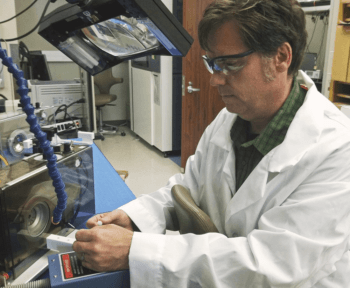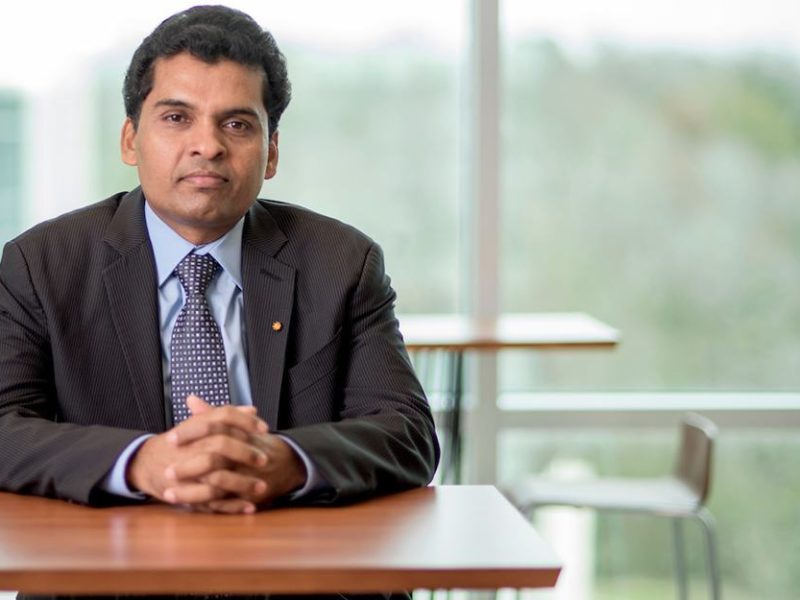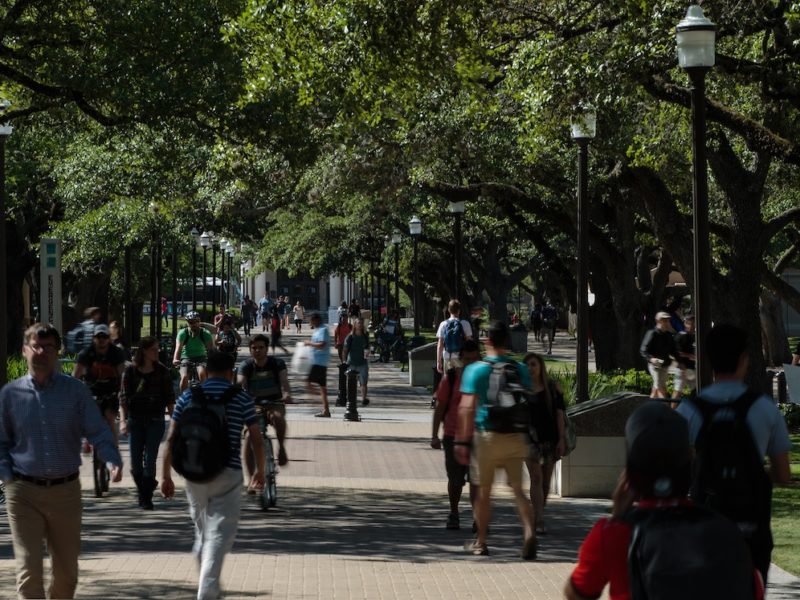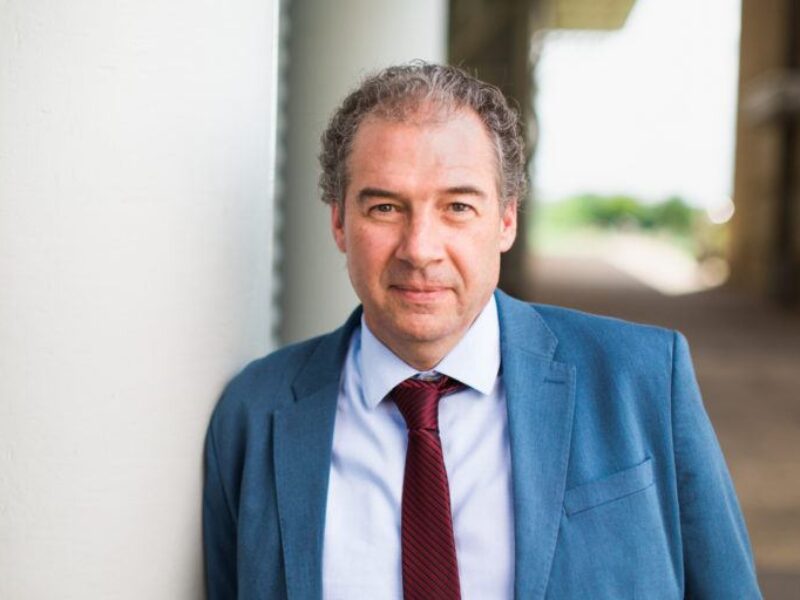Texas A&M-Led Research Aimed At Treating Brain Aneurysms Receives $2.5 Million NIH Grant

A Texas A&M University-led research effort aimed at treating potentially fatal brain aneurysms by filling them with polymer foams has received a $2.5M grant from the National Institutes of Health (NIH) with the goal of beginning human trials by 2018.
The three-year grant, which is supported by the NIH National Institute of Neurological Disorders and Stroke (NINDS), is led by Duncan Maitland, professor in the Department of Biomedical Engineering at Texas A&M. Maitland’s team of researchers includes colleagues from his department, the College of Veterinary Medicine and Biomedical Sciences at Texas A&M and the Mayo Clinic Medical School. The research is a collaboration between Maitland’s Biomedical Device Laboratory and the startup company Shape Memory Therapeutics.
The treatment, Maitland explains, makes use of special plastics called polyurethane-based shape memory polymer foams (SMPs) and could provide doctors with a more effective and less risky method for treating aneurysms – blood-filled, balloon-like bulges in the walls of a blood vessels that can rupture and cause neurological damage that is debilitating or even fatal, especially if near the brain.
Cerebral aneurysm ruptures occur in 30,000 people per year in the United States, and nearly 75 percent of those patients will either die or become neurologically debilitated, Maitland says.
Typically, treatment of aneurysms involves implanting platinum coils to reduce pressure on the vessel walls so that healing can occur before the aneurysm ruptures, Maitland says. These coils, he explains, can be effective but also can pose risks to the patient. In addition to sometimes causing inflammation that can inhibit healing, these coils can compact over time and cause subsequent rupture or re-rupture or lead to the formation of aneurysms adjacent to the original aneurysm, he says.
Maitland is working to overcome the limitations of conventional treatment methods by employing an alternate filling method for aneurysms that relies on polyurethane-based SMP foam instead of platinum coils. These foams have the ability to be made into a primary shape and then transformed into another shape with an increase in temperature, Maitland notes.
Their shape-shifting ability makes these foams an ideal material for filling aneurysms, he explains. In Maitland’s system, the SMP foam remains in a temporary crimped shape so that it can be inserted into a blood vessel and delivered to the aneurysm with the use of a microcatheter. Once at the aneurysm site, the foam is triggered to expand and fill the aneurysm sac by body temperature, Maitland says. Similar to how a sponge works, the SMP foam enables blood to fill the aneurysm, forming a clot and promoting and accelerating healing through the volume of the aneurysm and, importantly, at the neck or opening of the aneurysm.
No current devices, Maitland says, match both the volume filling and surface area characteristics of the team’s SMP-based device. For the 2mm diameter coil, the surface area is 29 times more than the next best device, and the volume filling is 20 times better than the next best device, Maitland notes. That’s important because high surface area and improved volume filling lead to dramatically improved healing when compared to bare platinum coils, Maitland explains.
Test results have revealed SMP foams promote long-term health of the areas of the blood vessel affected by the aneurysm, reducing the chances of the aneurysm reforming, Maitland says. This is evidenced, he explains, by the formation of the types of cells and tissue that lead to a more stabilized healing. For example, aneurysms treated with SMP foams show an increased presence of collagen instead of fibrin. Collagen, he says, is a far more mechanically stable tissue than fibrin, which is a short-term “patch” and abundant in aneurysms treated with coils. That’s a promising finding, Maitland says, because the more stabilized an aneurysm is, the less likely it will be to require re-treatment – something that unfortunately occurs in about 40 percent of aneurysms treated with coils.
In addition to demonstrating the promotion of an aggressive healing response in aneurysms, the SMP foams developed by Maitland and his team are showing strong signs of biocompatibility – their ability to be accepted by the body. In fact, the foams are outperforming other FDA-approved materials used in blood vessels, he notes. That’s important, Maitland says, because it means less inflammation in the area, which can inhibit the healing process. Typically, foreign objects implanted in the body trigger an inflammatory response as the body attempts to reject them, but the SMP foams used by Maitland show minimal inflammation once they are inserted into the aneurysm. Histology studies comparing SMP foams to two types of commonly used FDA-approved sutures used in vascular surgeries show the foams to outperform both types of sutures, meaning fewer cells associated with inflammation are showing up near the foams, Maitland notes.
The team’s grant is titled, “Shape Memory Polymer Embolic Foams for Treating Cerebrovascular Aneurysms” and is funded under the NINDS Cooperative Program in Translational Research (U01).
Shape Memory Therapeutics has contracted with BioTex, Inc., a medical device manufacturer based in Houston to lead product development and manufacturing for the project. Ashok Gowda, president of BioTex, will work with the research team. Gowda is a 2014 Outstanding Alumni Award recipient of the Dwight Look College of Engineering at Texas A&M.
Additional senior team members include Elizabeth Cosgriff-Hernandez, associate professor in the Department of Biomedical Engineering at Texas A&M; Fred Clubb, director of the Cardiovascular Pathology Laboratory in the College of Veterinary Medicine and Biomedical Sciences at Texas A&M; Jonathan Hartman, chair of the Shape Memory Therapeutics advisory board; David Kallmes, professor of radiology at the Mayo Clinic Medical School; and Linda Mummah-Schendel, NAMSA Medical Research Manager. Pre-clinical, quality systems and regulatory support will be provided by NAMSA, a medical research organization providing expert regulatory, laboratory, clinical and compliance services to medical device and healthcare product manufacturers.





